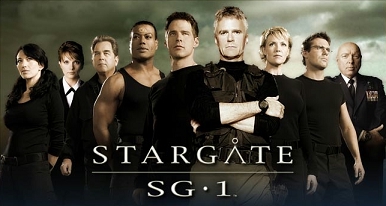Although I am passionate about stories, I am pushing for a
degree in something that might look at first glance entirely disconnected from
fiction in every way: a Doctorate of Philosophy (PhD) in astrophysics. I am one
year into the Master’s phase, on my way to becoming a world-class expert on
galaxy formation, neutron stars, black holes, galactic clusters, etc. (actually
probably only a few of these; they get complicated). Physics is the study of
space, time, matter, energy, and how they all interact with each other. In
other words, it is the study of the basic laws that govern how the universe
works. Physics is devoted entirely to what is true and what might be true,
while fiction is by definition not true.
Of course, there really is no limit on fiction besides the
writer’s imagination. Therefore, fiction is free to dip into the realm of what
might be true. In these cases, fiction and physics do overlap in a wonderful
genre that enriches both the intellect and the aesthetic sense. In the old
days, this kind of fiction was called “science fiction,” though sadly the term
has degraded to a stereotype of space ships, hostile aliens, and laser weapons,
the science aspect all but forgotten.
A few stories do, however, remain mostly true to the core of
science-based fiction, one of which I was enthralled with as I matured into
adulthood. That story was Stargate, which ran for seventeen seasons across
three shows. In it, teams of heroes walk through wormholes to other planets,
meeting new civilizations and fighting evil alien overlords. Its premise is
very similar to that of Star Trek, but Stargate’s military perspective and
serialized plot arcs make it completely unique. But it was Stargate’s strong attempt
at scientific realism that kindled in me the physicist spark.
In addition to Stargate, I read and watched any material
relating physics and science fiction that I could get my hands on. Among them
were The Physics of Star Trek by
Lawrence Krauss, and Sci-Fi Science
by Michio Kaku, in which were discussed the theoretical engineering possibilities
of warp drives, invisibility, teleportation, time travel, and many other
fictitious technologies.
When it came time to choose a major for college, I took one
glance at the list and chose physics, stating right then and there that I was
going for a PhD. I have never regretted that decision. I wrote my bachelor’s
thesis on the plausibility of faster-than-light travel, and for a while I had
my mind set on being the first person to invent a working warp drive. However,
I have come to realize that if a warp drive is invented, it will almost
definitely be centuries from now. But I have learned to love physics for what
it is, not for what I used to wish it would be.
When I started college, I told everyone the reason I chose
physics was to write better science fiction. Since then my focus has switched
to physics for its own sake, but I have gained knowledge and a mindset that
will help me write. With knowledge of astronomy, I can create realistic
planets. With an understanding of particle physics, I can invent a system for
artificial gravity. With a conceptualization of higher spatial dimensions, I
can give my characters a reasonable means of traveling faster than light.
Granted, most people probably won’t know the difference, but I care, and I want my science fiction
to be enjoyable to others like me.
Physics and fiction do not have to be completely
independent. Rather, they can complement each other to make something I see as
more beautiful than either is alone. The dynamic between the disciplines is
wondrous and complex. What I have written today is just a brief introduction, a
teaser; I have a multi-article series in the works on the relationship between
science and science fiction, so sometime in the future you can expect to see
more Of Science and Science Fiction.
Images taken from Wikipedia.


No comments:
Post a Comment